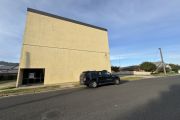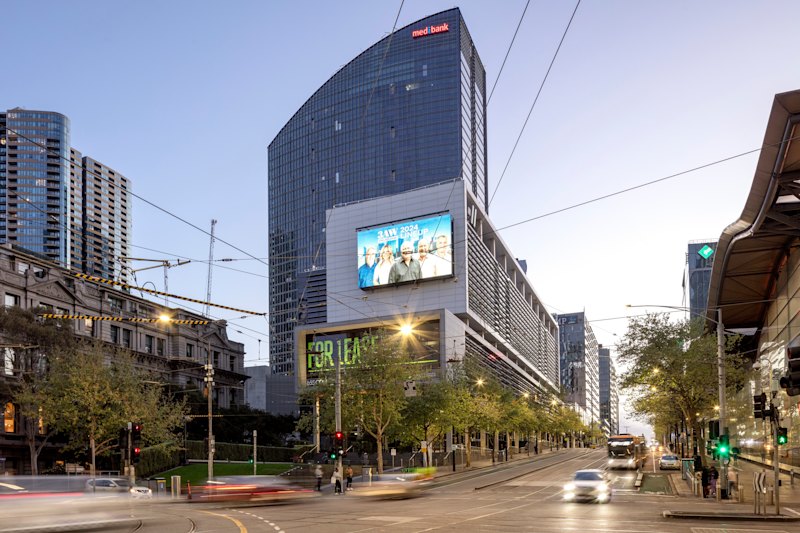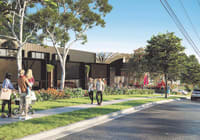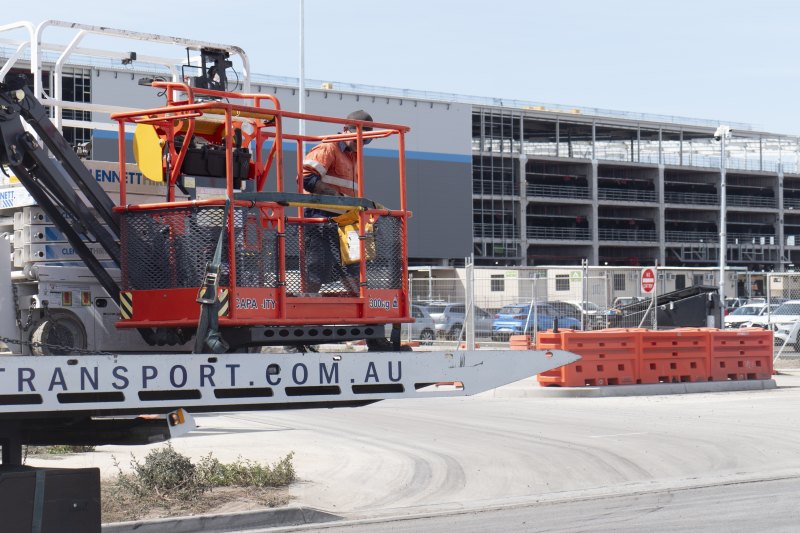
The latest way to make money – building warehouses for influencers
Oscar Ledlin is not averse to showing off the fruits of his success – he drives a BMW on weekdays, a bright purple Nissan GT-R sports car on the weekends and wears a necklace with his name spelt out in diamonds.But alongside social media mentions of his young family, adventures with friends and travel photos, the 32-year-old Melbourne developer also posts frequently about his missteps.
These include the multiple times he was sued by rival developers, how he massively underestimated costs on projects and how he was rejected 46 times by lenders in the early days. “The reality is that I’ve had, and continue to have, more losses than I’ve had wins. Some things that I’ve touched, in fact, have actually turned to sh*t,” he told his 29,000 Instagram followers in July.
This cataloguing of the many potholes in his career has turned him into a social media star, boosting business for his company Ledlin Develop, which turns over $65 million a year through the development and construction of new age industrial estates, offices and business parks. With a pipeline of projects that now exceeds $200 million, Ledlin has made it onto the Financial Review Young Rich List for the first time, ranked 67, with a $72 million fortune.
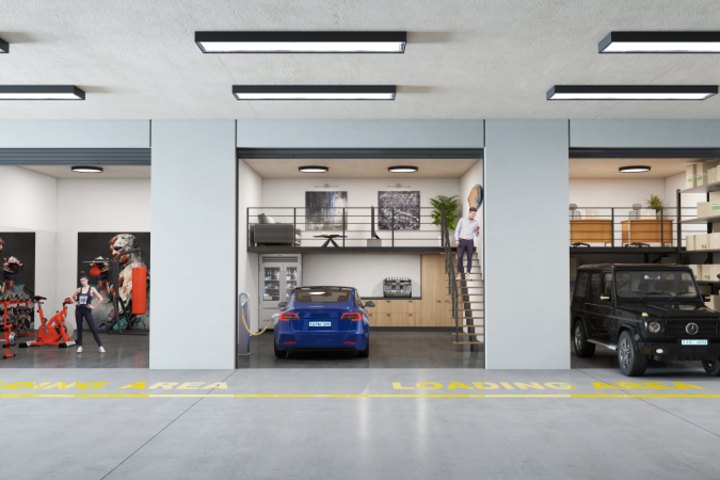
“Instagram is an easy way to showcase what you do and engage with an audience,” Ledlin tells The Australian Financial Review Magazine. “We never sell property on Instagram. We never say, ‘these are our warehouses, at X dollars’. We use it to showcase our product. When people reach out to us via Instagram, we add them to our VIP list and invite them to our launches.”
This approach to branding and marketing has become a relatively inexpensive yet highly effective way to generate leads that have converted into tens of millions of dollars of off-the-plan sales of industrial, office and storage units. By promoting his developments via Instagram (and explaining the benefits of investing in industrial property), Ledlin estimates he has generated sales of between $30 million and $35 million. This included selling $6 million of property in late 2020, when inspections were banned during Victoria’s COVID lockdown.
Ledlin attributes this success on social media to advice he received from the late Rich Lister Jonathan Hallinan. He had built up a property empire and a personal fortune of $735 million by the time he died from cancer last year, at just 47, and that was due in part to his embrace of Instagram. “Building a brand – that’s something Jonathan did really well [with BPM],” says Ledlin. “Our brand is nowhere near as prominent as his, but we’re starting to get some recognition.”
Hallinan’s other important piece of advice was to do the right thing, even if it costs you money. Ledlin says this too came in handy when he was hit with a surge in construction costs on the last stage of an $82 million business park project in Springvale in Melbourne’s south-eastern suburbs.
The final stage featured a new type of smaller-scale commercial space that Ledlin had pioneered to cater for small business owners such as e-commerce start-ups and within the budgets of first-time property investors. Branded as Flexie units, the entry-level price was just $99,000. Ledlin had sold 45 of these off the plan in 2021, but by the time construction commenced 18 months later, costs had increased up to 25 per cent.
The young developer says he was faced with a difficult decision: honour the contracts and absorb the costs or generate millions of dollars in extra revenue by reneging on these contracts and reselling each unit at a higher price. Ledlin says he did the former. While it made for a difficult conversation with his accountant, he says the alternative would have been short-sighted and damaged the brand he had worked so hard to cultivate. “As I planned to be in the industry a lot longer, I knew I could make up the money.”
AFR Magazine has sighted documents provided by Ledlin that show he did indeed allow buyers to settle their off-the-plan purchases at the original price and walk away with a handsome capital gain. In one example, a Flexie unit bought off the plan in mid-2021 for $127,000 (and settled in December 2023) resold in August for $162,000, representing a near 30 per cent windfall for its owner.
This strong capital growth was one of the reasons why investors should put their money in industrial property and not housing, Ledlin told his Instagram followers in July (in a video showing him snowboarding down a mountainside). “If you bought a $500,000 warehouse in 2019, you’d have a million-dollar asset today paying you more than $1000 a week in rent,” Ledlin wrote.

Born in Frankston, a south-eastern Melbourne suburb at the gateway to the Mornington Peninsula, Ledlin was the second youngest of five children. After leaving school at 17, he did some work for his father Michael’s concreting business. He started to think about property development while studying for a business degree at Monash University.
At the time, he was working 50-hour weeks across three jobs including as a professional boxer (he won seven out of his eight bouts and became Victorian welterweight and junior middleweight champion in 2013), but ultimately, his interest in business was stronger than his passion for boxing. “I was exposed to the building process through my dad’s domestic concreting business,” says Ledlin. “We’d lay the house slab and 12 months later, we’d be doing the front footpath.”
Ledlin enjoyed the process of seeing an empty block turned into a completed building, and was keen to see if he could buy a block of land and apply his own creative touch. While his father worked in the residential sector, he encouraged his son to focus instead on commercial property where the returns were higher and few young developers were venturing. His father came along to meetings with local councils and provided financial and emotional support.
Ledlin’s first project – the subdivision of a block of land in Somerville, a suburb on the Mornington Peninsula – when he was just 21, provided early business lessons, including the importance of following his intuition. Having saved up a $50,000 deposit, he was offered the block for a reduced price of $800,000. However, there was a big problem. The site had drainage and low water level issues that had already sent one previous owner broke while another had lost a lot of money. Ledlin thought “it would be a great learning exercise” to see if he could make it work.
When a civil engineer told him there was no way the site could be drained and therefore could not be subdivided, Ledlin drew on his concreting background (he was still working part-time for his father) and was able to laser measure the actual depths of the stormwater pipes, which he found were different to the information held by Melbourne Water. “I went back to the civil engineer, and I showed him the levels that I had measured and that they didn’t match up with what he gave me.”
The bewildered civil engineer later concluded that the wrong water levels had been entered into the system 40 years ago, perhaps due to a simple typo. Ledlin’s intuition that something was awry, and his ability to prove it, meant the site could now be subdivided. This instantly lifted its valuation from $800,000 to $2.4 million.
He’d scored himself a bargain and was on his way to completing his first development. He was able to build and sell five warehouses on these six lots. He doubled down on that success, eventually building another 20 lots in Somerville, including one lot with 10 warehouses. Then he bought another site and built 19 warehouses and another, constructing 28 warehouses.
Of course, none of this progress was easy or straightforward. He nearly went broke several times on his first project, and because of his age and inexperience, he kept on getting knocked back for finance. From those early projects, Ledlin refined his business plan. “We target the young e-commerce [entrepreneur] market. We’re predominantly in the sub 500-square-metre industrial space.”
When it comes to choosing sites, he focuses on suburbs with a minimum $1 million median house price and a high prevalence of townhouses and apartments, meaning there is a lack of garage and shed space – creating demand for his smaller commercial units. His most recently completed project at Springvale comprised 147 lots in total, including a three-level office building. This project was the first to incorporate the Flexie, smaller-scale commercial units, which come with luxury finishes and amenities like co-working, boardrooms and car wash facilities.
“It’s a cross between a WeWork facility and Storage King,” Ledlin says. “We’ve found that these types of businesses will pay for luxury inclusions within their commercial space because a lot of us nowadays live our lives on social media. We don’t make a coffee without putting it on our Instagram store. [People] want to do those photos on stone benchtops with brush gold tap fittings.”
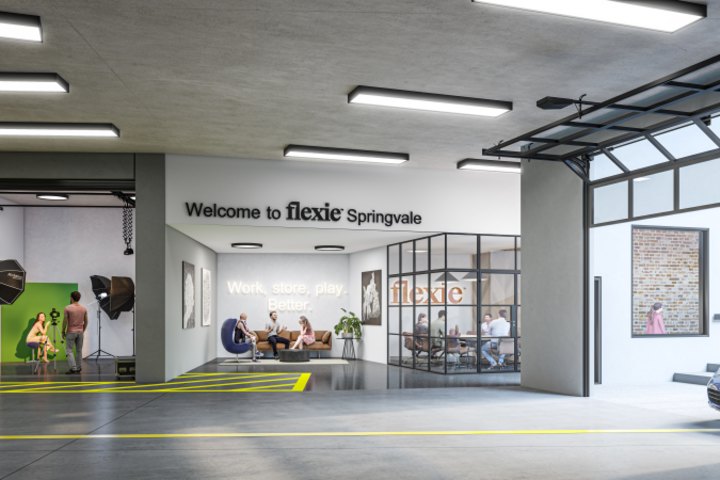
One tenant, James Marshall, founder of residential renovator Marshall Group, says like most people, he came across Ledlin via social media. “He’s a similar age to me, he’s well-spoken and says what he means and means what he says. Like the environment he has created at Springvale, he projects a young, entrepreneurial vibe.”
Marshall says he chose the Springvale business park because they wanted a more luxurious office space that represented the work his business did – high-end renovations – and where they felt comfortable bringing clients. Marshall is buying into Ledlin’s new business park development, Vermont Inc in Melbourne’s eastern suburbs, which includes 20 office-warehouses, 50 Flexie units, two luxury office suites and a cafe.
Outside property development, Ledlin owns a 22 per cent stake in vodka drink Gee Up alongside Rich Lister Adrian Portelli (owner of Melbourne’s most expensive penthouse) and Gold Coast-based influencer Troy Candy. Gee Up is sold in 2000 bottle shops, bars and clubs nationally and has a circa $30 million valuation.
Over Instagram, Ledlin has encouraged Gen Zs and Millennials to enter the commercial property market, while challenging the notion that home ownership is the only path to property wealth. “We leave school in Australia, and it’s almost like a race to be the first person to commit to a 30-year mortgage, 60 kilometres from where you want to live.” Instead, he suggests they should rent where they want to live and invest in commercial property, for much higher returns.
While Ledlin currently rents, he admits that with a young family – his wife Jessie Williams is a business coach and mentor to entrepreneurs – he is finally in the market to buy a family home. And while he has been spruiking the benefits of investing in commercial property, he wants to take his brand into other asset classes when the time is right. “Exploring the residential space is the next step. In time, I’d like to take my personal brand into the luxury residential market.”

